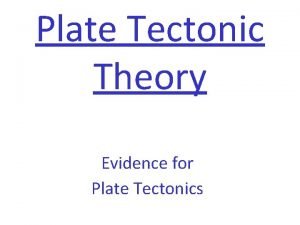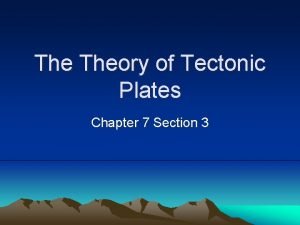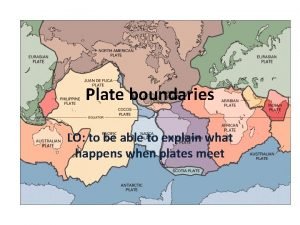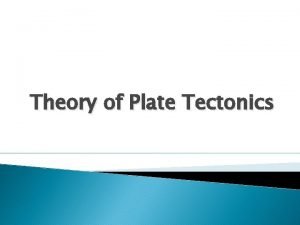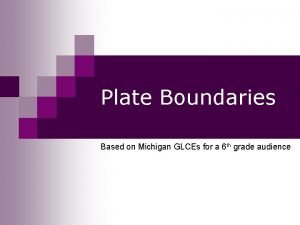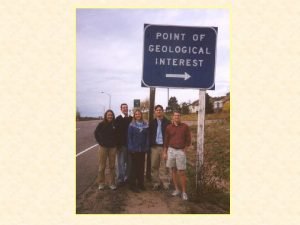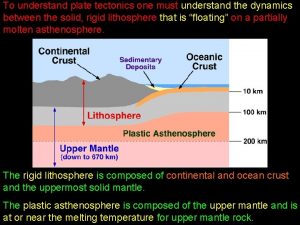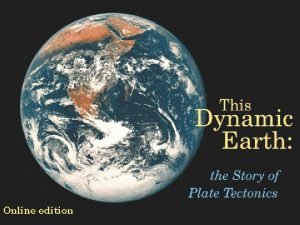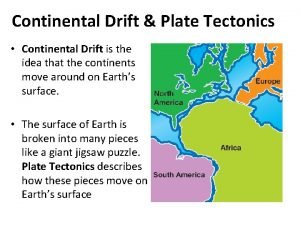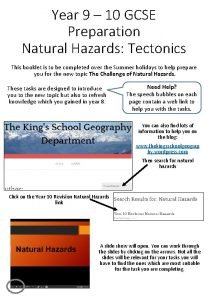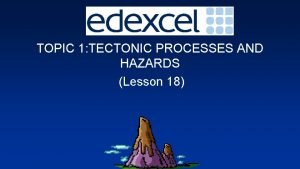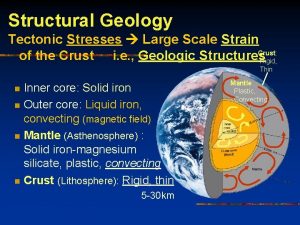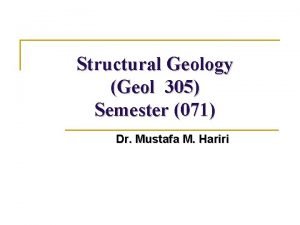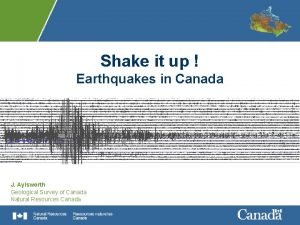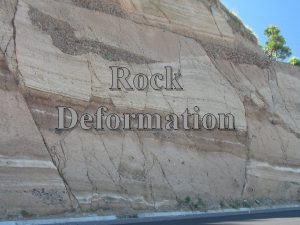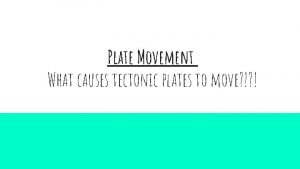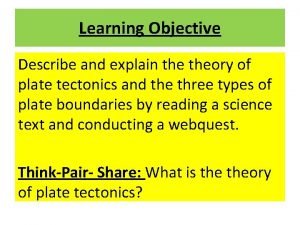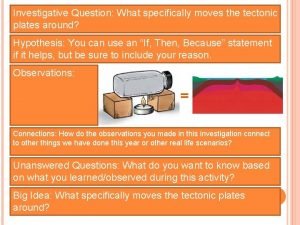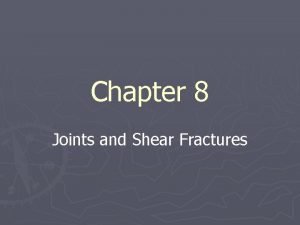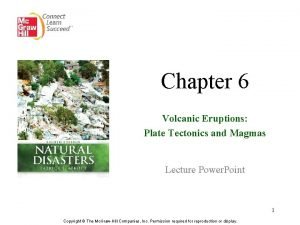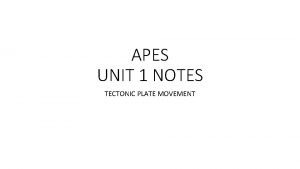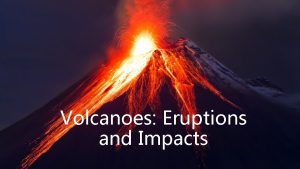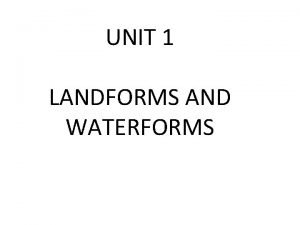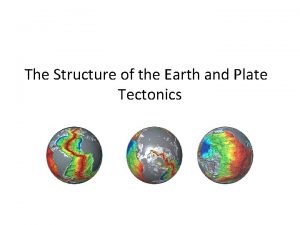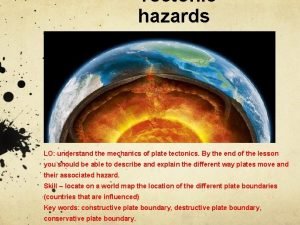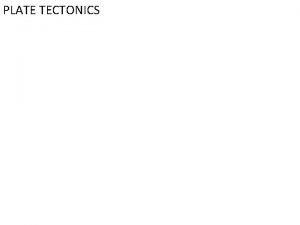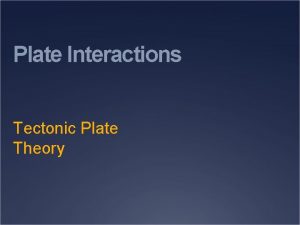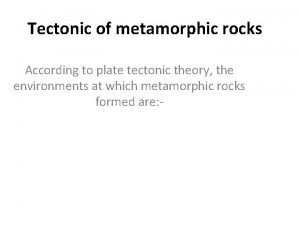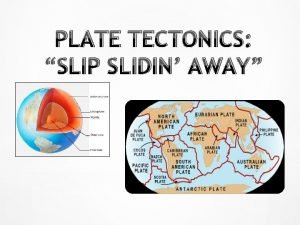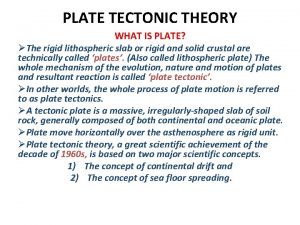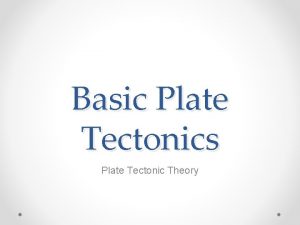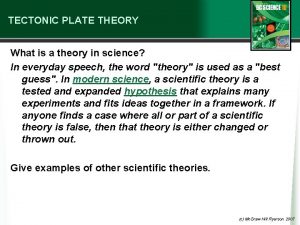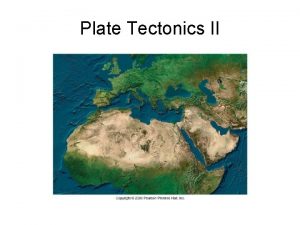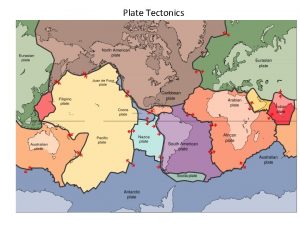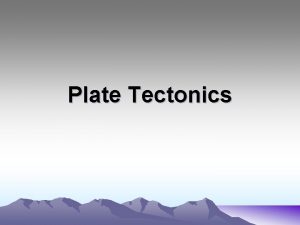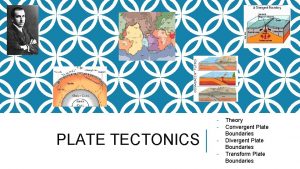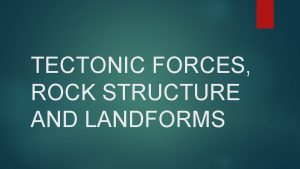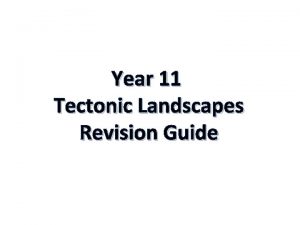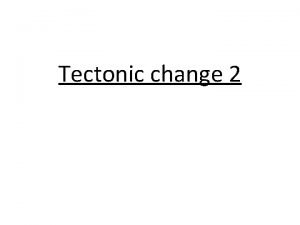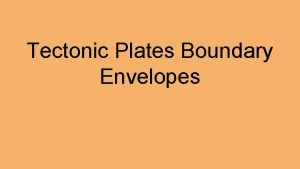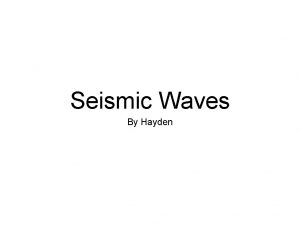Plate Tectonic Theory Plate Tectonic Theory n Plate






































- Slides: 38

Plate Tectonic Theory

Plate Tectonic Theory n Plate tectonics is a relatively new theory that has revolutionized the way geologists think about the Earth. n Plate: Large slab of solid rock n Tectonics: from the Greek root “to build” n Plate tectonics is a combination of two earlier ideas, continental drift and sea-floor spreading

Tectonic Plates n According to theory, the surface of the Earth is broken into large plates.

Earth’s Interior The lithosphere is the rigid, upper part of the mantle and all of the crust It is broken into 30 “plates” which vary greatly in size and shape. The lithosphere floats on the asthenosphere which is the flowing part of the upper mantle.


Historical Theories 1596 Abraham Ortelius (April 14, 1527 – June 28, 1598) was a Flemish cartographer (map maker) and geographer.

Continental Drift Ortelius is believed to be the first person to imagine that the continents were joined together before drifting to their present positions. Ortelius was the first to see that the shape of the coasts of South America and Europe-Africa were similar, and to propose continental drift as an explanation



Nicolaus Steno 1636 -1686 Nicolaus Steno observed the changes in a sequence of rock layers in the mountains of Italy. • Steno's observations became known as the Law of Superposition Danish Anatomist and Geologist

Law of Superposition – in a sequence of sedimentary rock layers, each layer of rock is older than the layer above it and younger than the rock layer below it. Youngest rock layer Oldest rock layer

James Hutton 1785 James Hutton (1726 -1797) was a Scottish geologist. In 1785 he presented his uniformitarian principle to the Royal Society of Edinburgh.

Uniformitarian principle “The present is the key to the past” that catastrophic processes were not responsible for the landforms that existed on the Earth's surface. n This idea was opposed to the ideas of that time period which were based on a biblical interpretation of the history of the Earth. n suggests

Unitarianism n means “the same throughout” n Scientists believed that the rates of all geologic processes had been the same throughout time. The theory of uniformitarianism suggested that the landscape developed over long periods of time through a variety of slow geologic and geomorphic processes.

The Grand Canyon in Arizona shows how geologic processes such as weathering and erosion happen slowly over time.

Alfred Wegener (1880 -1930) • German geophysicist • Professor of meteorology and geophysics at the University of Marburg • Studied fossils on different continents

1912 - Supercontinent Theory around 200 million years ago, the supercontinent Pangaea began to split apart. n Pangaea comes from the Greek “all the Earth” n n. Wegener's theory was based in part on what appeared to him to be the remarkable fit of the South American and African continents, first noted by Abraham Ortelius three centuries earlier.

Fossil Evidence Wegener was also intrigued by the occurrences of unusual geologic structures and of plant and animal fossils found on the matching coastlines of South America and Africa, which are now widely separated by the Atlantic Ocean. n He reasoned that it was physically impossible for most of these organisms to have swum or have been transported across the vast oceans. To him, the presence of identical fossil species along the coastal parts of Africa and South America was the most compelling evidence that the two continents were once joined. n


Pangaea

Continental Drift 225 million years ago - Supercontinent Pangaea Over millennia, continents drifted apart. Present Day: 7 continents which are continuing to drift (separate) at a rate of about 10 cm per year.

A Theory Contended n The theory of continental drift would become the spark that ignited a new way of viewing the Earth. But at the time Wegener introduced his theory, the scientific community firmly believed the continents and oceans to be permanent features on the Earth's surface. n Wegener’s proposal was not well received, even though it seemed to agree with the scientific information available at the time.

The Fatal Weakness n. A fatal weakness in Wegener's theory was that it could not satisfactorily answer the most fundamental question raised by critics of his time: What kind of forces could be strong enough to move such large masses of solid rock over such great distances?

Arthur Holmes Lived 1890– 1965 British Geologist n 1929 - Convection Currents Theory – about the time Wegener's ideas began to be dismissed for lack of a mechanism of movement, Holmes elaborated on the idea that the mantle undergoes thermal convection

Thermal Convection in the Mantle n As magma is heated, it tends to rise, then cools and sinks again. This repeated heating and cooling results in a current which may be enough to cause continents to move.

Convection Conveyor Belt n Arthur Holmes compared this thermal convection to a conveyor belt. The pressure from the upwelling of magma could break apart a continent and then force the broken continent in opposite directions carried by the convection currents. This idea received very little attention at the time.

What We Know Today n Even though theory of continental drift was proposed in 1912 by Alfred Wegener, the idea of moving continents wasn't generally accepted until the early 1960 s. n That's when Wegener's theory was resurrected by Harry Hess, Robert Dietz, Fred Vine, and Drummond Matthews

Forces that Shape the Earth n Geologists now understand the forces that cause tectonic plates to move. n The force that causes plates to move is called convection. n This convection force occurs in the asthenosphere of the mantle

Convection Currents The lithospheric plates are thought to be moved around by circulating motions. n This process is similar to what you see in a lava lamp. n – The material in the lamp is heated by the bulb. The material then rises and is replaced by the cooler material that sinks to the bottom. – This causes circulating movement

Convection in the Earth convection currents in the mantle move tectonic plates as the plastic-like asthenosphere circulates due to the heat present in the core. The large scale circulations (motions) in the asthenosphere move the lithospheric plates on the surface of the Earth leading to the continental drift observed today.

Harry Hess Lived 1906– 1969 American Geologist n 1962 - Sea Floor Spreading Theory – idea that the seafloor itself moves and carries continents with it, as it expands from a central point n caused by convection currents in the molten, very weak upper mantle, or asthenosphere.

Sea Floor Spreading molten magma from beneath the earth's crust could ooze up between the plates in the rift in the ocean floor. n As the hot magma cooled in the ocean water, it would expand push the plates beside it. n

Mid Atlantic Ridge North and South America would move to the west and Eurasia and Africa would move to the east. n The Atlantic Ocean would get wider, but the coastlines of the landmasses would not change dramatically. n

Dan Mc. Kenzie Lives 1942– English Geophysicist n 1968 - Theory of Plate Tectonics – is a combination of two earlier ideas: continental drift and sea-floor spreading.

Plate Tectonics n Earth's outermost layer, the lithosphere, is broken into 7 large, rigid pieces called plates. n Several minor plates also exist. n The plates are all moving in different directions and at different speeds, from 2 cm to 10 cm per year in relationship to each other.

Main Features of Plate Tectonics n n The Earth's surface is covered by a series of crustal plates. The ocean floors are continually moving, spreading from the center, sinking at the edges, and being regenerated. Convection currents beneath the plates move the crustal plates in different directions. The source of heat driving the convection currents is from radioactivity deep in the Earth’s mantle.

Plate Boundaries n Stay tuned for our next topic: Plate Boundaries

References n n n USGS http: //pubs. usgs. gov/publications/text/historical. html BBC Schools http: //www. bbc. co. uk/schools/gcsebitesize/science/21 c/ earth_and_space/continentaldriftrev 1. shtml University of Oregon http: //jersey. uoregon. edu/~imamura/121/lecture 9/tectonic. html PBS http: //www. pbs. org/wgbh/aso/tryit/tectonics/ University of California, Berkeley http: //www. ucmp. berkeley. edu/history/wegener. html
 Plate tectonics vs continental drift
Plate tectonics vs continental drift Plate tectonic theory evidence
Plate tectonic theory evidence Continental drift theory and plate tectonics theory
Continental drift theory and plate tectonics theory 7 tectonic plates
7 tectonic plates Constructive plate boundary
Constructive plate boundary Tectonic plates interact at places called plate
Tectonic plates interact at places called plate Is michigan on a tectonic plate boundary
Is michigan on a tectonic plate boundary Fuji tectonic plate
Fuji tectonic plate Plate tectonic gizmo answers
Plate tectonic gizmo answers The plate tectonic system is driven by *
The plate tectonic system is driven by * What tectonic plate is south africa part of
What tectonic plate is south africa part of Fault geology
Fault geology Rate theory of chromatography
Rate theory of chromatography Pour plate and spread plate difference
Pour plate and spread plate difference Streak plate vs pour plate
Streak plate vs pour plate Streaking method
Streaking method 7 lithospheric plates
7 lithospheric plates Converging continental plate and oceanic plate oreo
Converging continental plate and oceanic plate oreo Primary and secondary effects of a tectonic hazard
Primary and secondary effects of a tectonic hazard Where is the ring of fire located
Where is the ring of fire located Pinotubo
Pinotubo Tectonic hazard profiles
Tectonic hazard profiles Tectonic joints
Tectonic joints Tectonic joints
Tectonic joints Grand banks earthquake of 1929
Grand banks earthquake of 1929 Reverse fault
Reverse fault What causes tectonic plates to move? *
What causes tectonic plates to move? * Transform fault
Transform fault Tectonic plates with names
Tectonic plates with names What is an investigative question
What is an investigative question Unloading joints
Unloading joints Tectonic setting of stratovolcanoes
Tectonic setting of stratovolcanoes Plate tectonics apes
Plate tectonics apes Shield volcano
Shield volcano Convection cells
Convection cells Struture of the earth
Struture of the earth Tectonic plates move
Tectonic plates move Divergent
Divergent How many major tectonic plates
How many major tectonic plates

